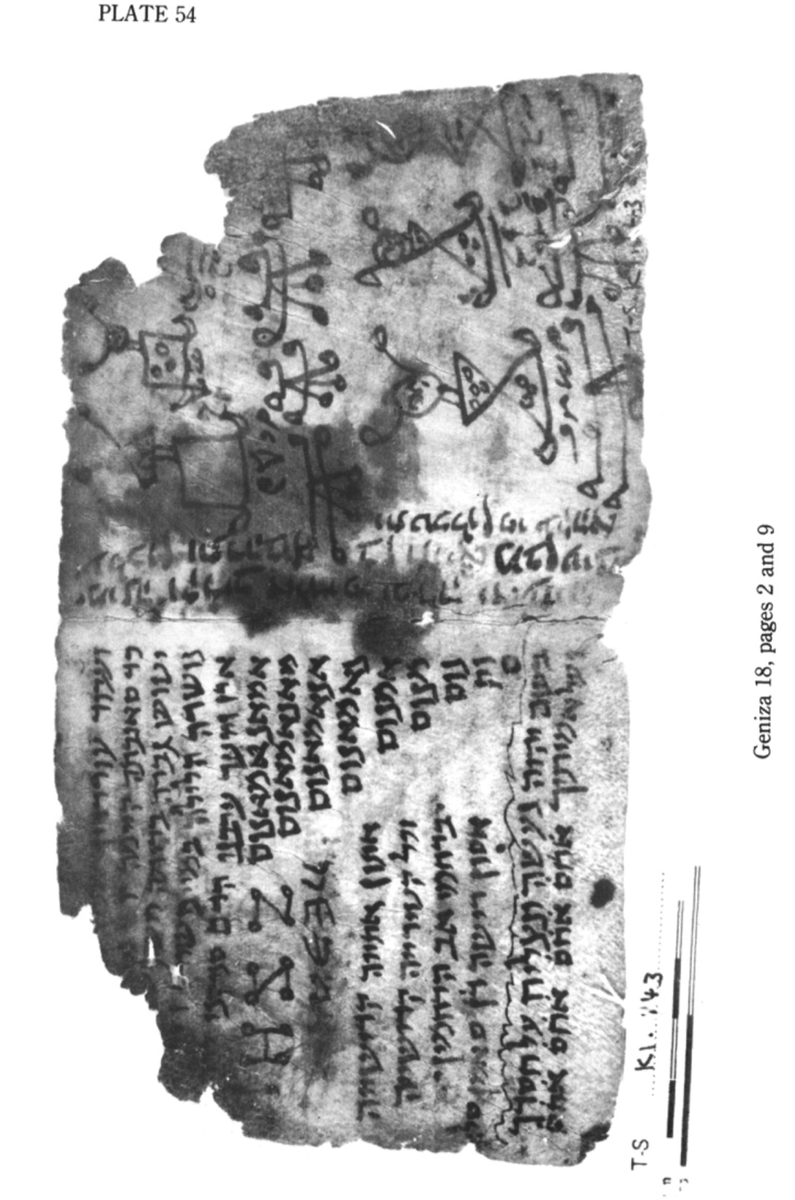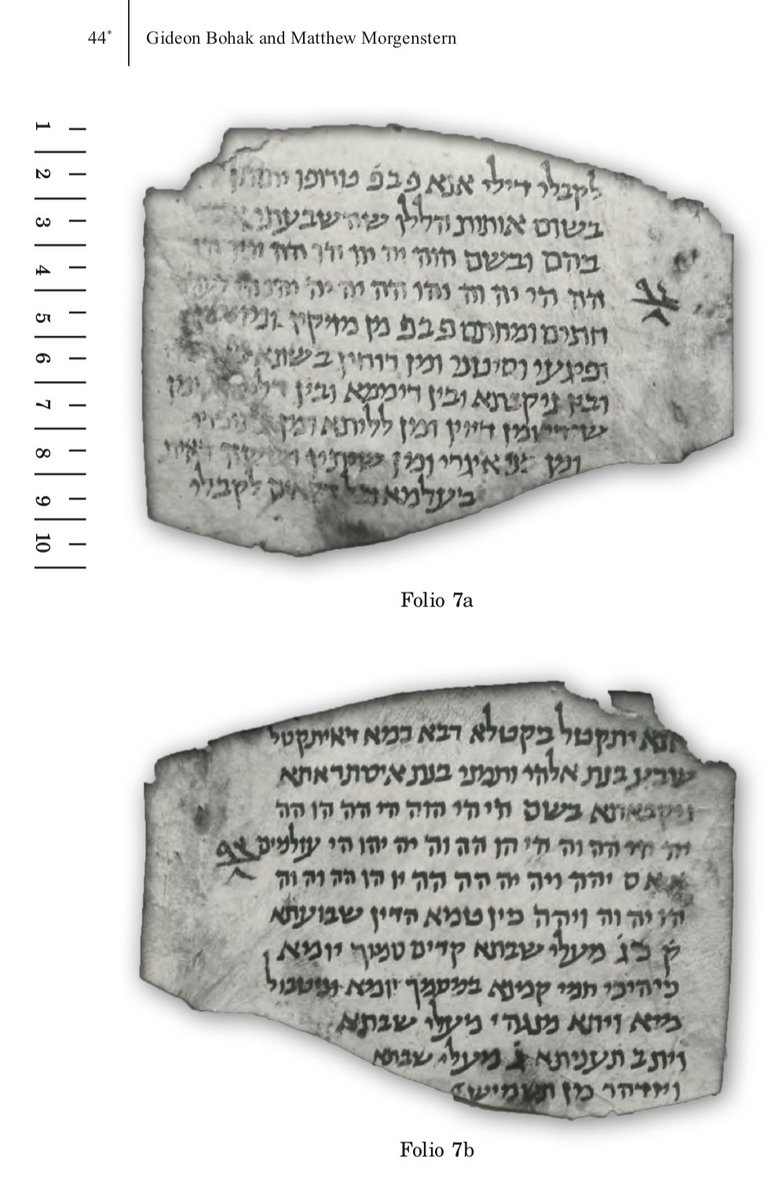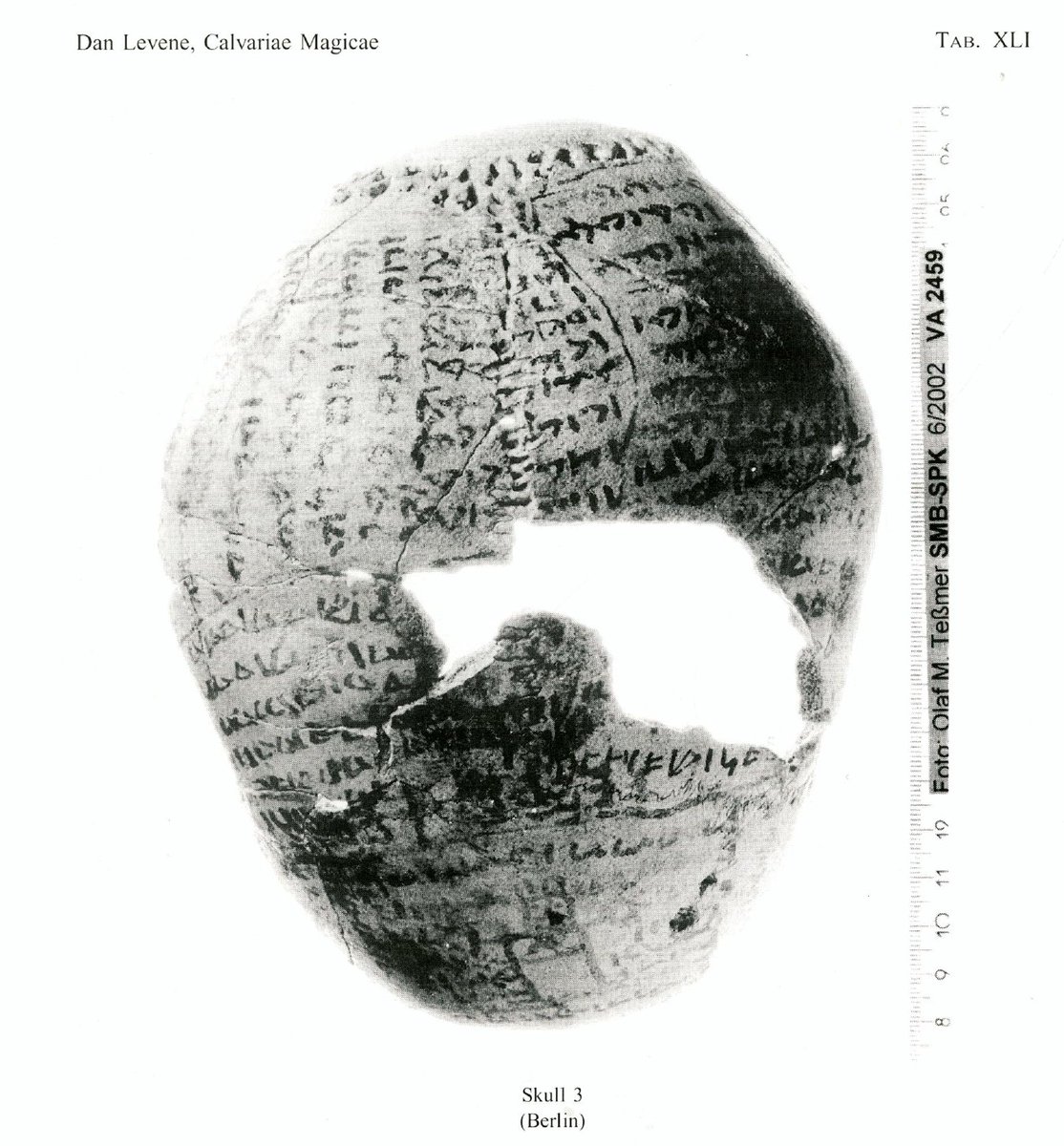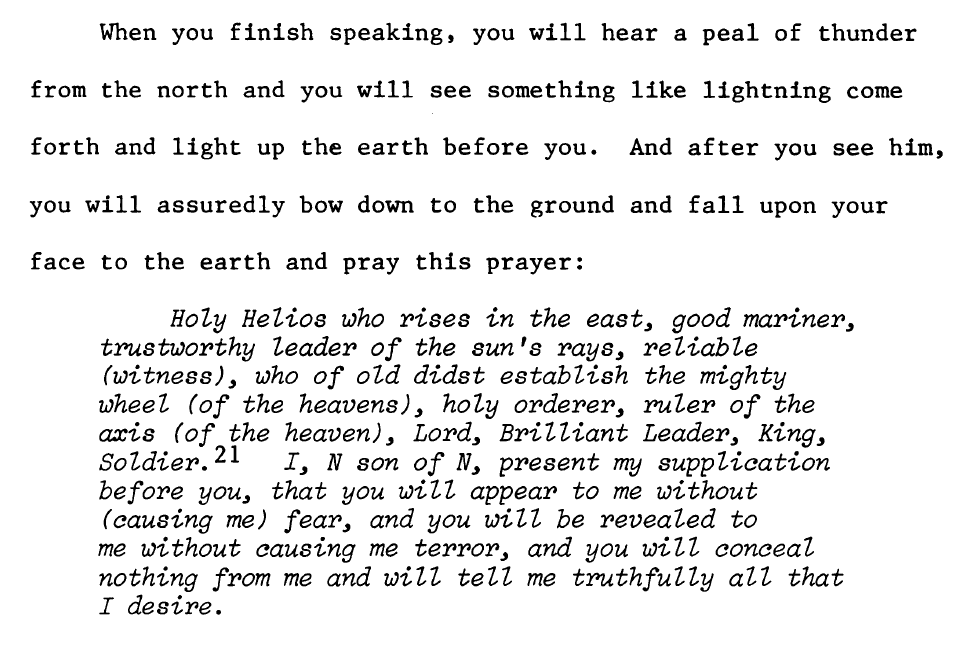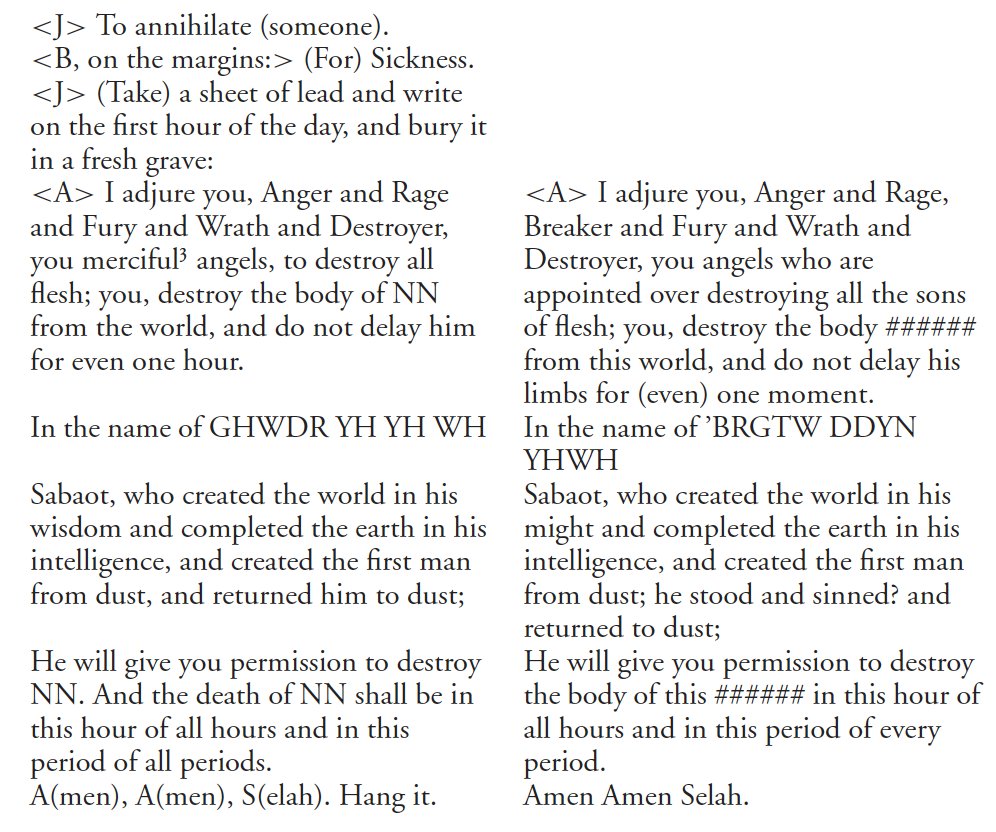A thread on Jewish magical recipe books, or grimoires, from late antiquity. Ancient and Medieval Jews possessed a variety of handbooks to harness the supernatural. 1
These include astrological handbooks like the Hygromancy of Solomon, a late antique Greek text perhaps composed by a Jew, or the astrological "notebook" of Joshua son of Levi in b. Shabbat 156a. These list the propitious and auspicious periods to pursue certain activities. 2
Before beginning, it is important to note that there are many non-Jewish magical recipe books as well, especially well attested among the Greek Magical Papyri (PGM). The PGM and Jewish handbooks often share incantations in common. But the Jewish compositions are also distinct. 3
I will focus on incantation recipe books. Broadly speaking, these came in at least two varieties: unsystematic laundry lists and literary compositions. In these works, incantations are anonymized, so where names are required we find the equivalent of "list client name here." 4
As their name implies, unsystematic laundry lists consist of a series of incantations culled together usually with no clear connection between them. Spells are typically introduced with a short prescription like "for hate" or "for love" or "for sickness." 5
Many such works exist, often in fragmentary form. One, from the Cairo Genizah (TS K1.143), published by Naveh and Shaked, lists a variety of incantations, including "an amulet for a bride," "for subduing," "for loosening," and "healing for every ailment." 6
Another was part of the so-called Damascus Genizah discovered in Qubbat al-Khazna, or dome of the treasury, in the famous Umayyad Mosque in Damascus. A handful of Jewish texts were found among its thousands of Arabic documents, one of which was an Aramaic magical recipe book. 7
This more fragmentary work, published by Bohak and Morgenstern includes incantations "for love," "Against fever," though most of the opening prescription notes are missing. 8 https://www.academia.edu/37186760/Gideon_Bohak_and_Matthew_Morgenstern_A_Babylonian_Jewish_Aramaic_Magical_Booklet_from_the_Damascus_Genizah_Ginzei_Qedem_10_2014_9_-44_
Despite their unsystematic form, these documents are chock full of data. For instance, the Cairo Genizah fragment more closely resembles late antique Jewish magic traditions from Palestine, whereas that in the Damascus Genizah is clearly indebted to Babylonian Jewish magic. 9
The Damascus fragment shares much with the famous Babylonian Incantation bowls, including invocation of legal formulae ( @avbamkin), but also other noteworthy phenomena, such as the appeal to skulls. We have found skulls bedecked with Babylonian Jewish Aramaic incantations. 10
By contrast, the literary compositions are cohesive works, with introductions, conclusions, and some ordering mechanism in the body (though the connection between adjacent recipes is not always apparent). They draw on different traditions and present themselves in unique ways. 11
I will highlight two: Sefer HaRazim, or the Book of Mysteries, and Harba DeMoshe, or the Sword of Moses. A translation of Sefer HaRazim was published by Michael Morgan, and a new translation of Harba DeMoshe was published by (the real!) Yuval Harari. 12 https://muse.jhu.edu/article/476344/pdf
Sefer HaRazim presents itself as a divine work presented to Noah upon entering the ark. It therefore relates to many Second Temple Jewish works, such as Enoch, Jubilees, and the Genesis Apocryphon, that attribute works to Noah. 13
Indeed, according to Sefer HaRazim, Noah learned how to build the ark by following the instructions in the book! 14
The work is carefully structured around the seven firmaments of heaven, each firmament housing a series of angels & celestial bodies to which one appeals for incantations. This heavenly journey again relates to Second Temple traditions and to Hekhalot or Jewish mystical lit. 15
As an aside, Sefer HaRazim includes a series of incantations to the sun, one of which names the sun as Helios. This is an important text, then, with which to contextualize the late antique synagogue mosaics with zodiacs, the center of which depicts Helios on his chariot. 16
If Sefer HaRazim outlines the knowledge that is necessary to properly appeal to heavenly forces, Harba DeMoshe offers a different approach, one that demands following a certain ascetic and practical regimen in order to prepare oneself to wield "the sword of Moses." 17
The sword of Moses appears to be the angelic names & formulae necessary to control the thirteen primary angels and one dominant angel, who will then do the wielder's bidding. This is very much a two-edged sword (pun!): improperly wielding the sword damages or kills the user. 18
Notice how both Sefer HaRazim and Harba DeMoshe therefore appeal to earlier figures to authorize, legitimate, and ground the practices and knowledge they present. They also connect these practices to celestial bodies and angelic forces in hierarchical arrangements. 19
Both types of recipe books - the unsystematic and literary compositions - raise questions about purpose and audience. Is it fair to conclude that the unsystematic lists were private copies of ritual experts, or perhaps copies used by individuals? 20
The problem is that both the Cairo and Damascus Genizah texts have beautiful hands that do not typically suggest private use. 21
The purposes of the literary compositions are even more difficult to ascertain. They cannot be reduced to their component recipes. Were they intended to legitimize these practices? Did they service particular communities, such as HdM, with its mystical praxes and expectations? 22
Finally, we have an abundance of parallel recipes and incantations. Yet we almost never find exact parallels between them. So, either we do not have the recipes used to compose these incantations, or more likely, recipe books provided guidelines but not exact formulae. 23
Later this week I will post a thread that focuses on Jewish incantations for memory and knowledge acquisition, something we could all benefit from in this moment of information saturation. 24/fin

 Read on Twitter
Read on Twitter